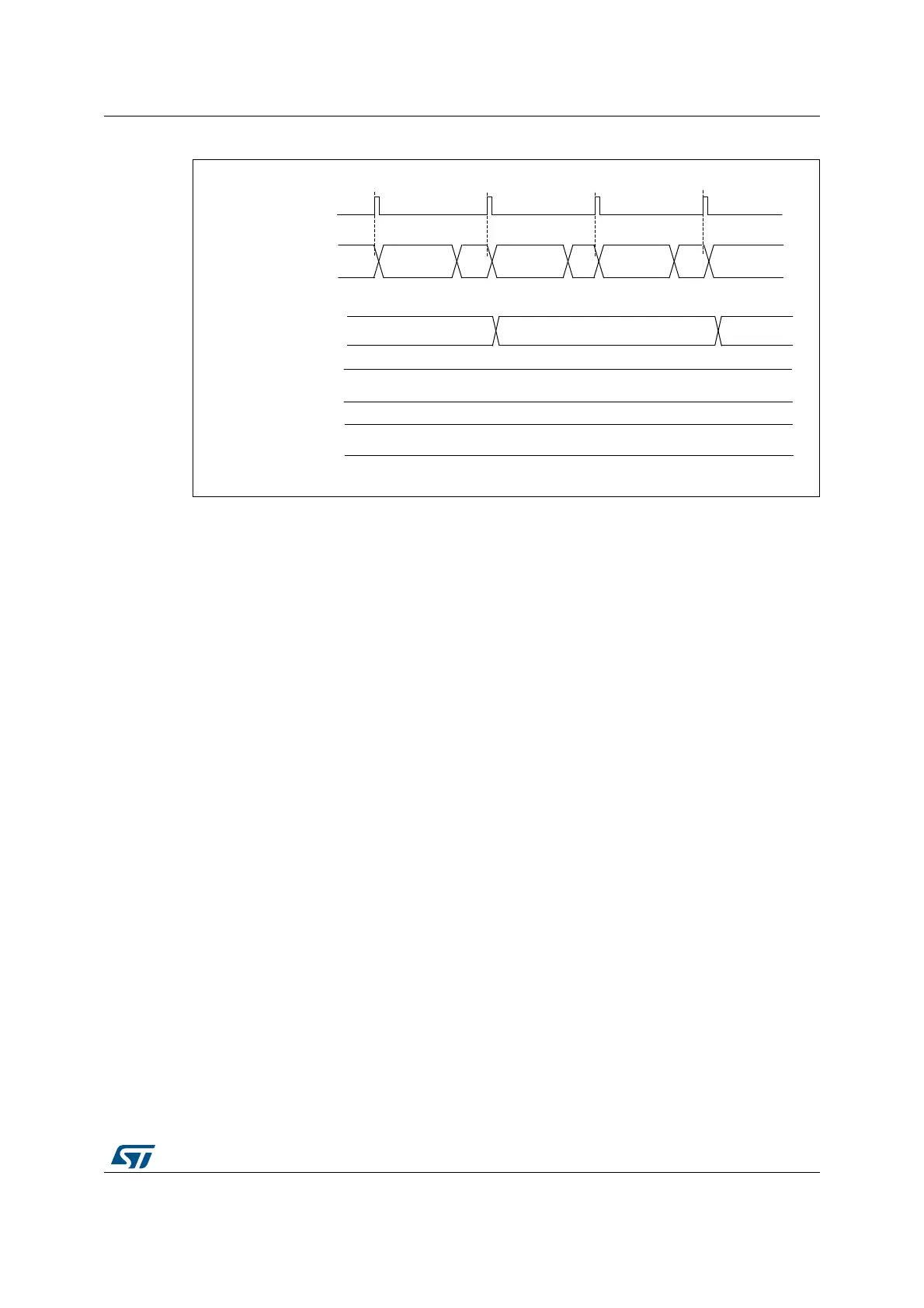RM0440 Rev 4 617/2126
RM0440 Analog-to-digital converters (ADC)
724
Figure 91. Mixing single-ended and differential channels
21.4.9 ADC on-off control (ADEN, ADDIS, ADRDY)
First of all, follow the procedure explained in Section 21.4.6: ADC Deep-power-down mode
(DEEPPWD) and ADC voltage regulator (ADVREGEN)).
Once DEEPPWD=0 and ADVREGEN=1, the ADC can be enabled and the ADC needs a
stabilization time of t
STAB
before it starts converting accurately, as shown in Figure 92. Two
control bits enable or disable the ADC:
• ADEN=1 enables the ADC. The flag ADRDY will be set once the ADC is ready for
operation.
• ADDIS=1 disables the ADC. ADEN and ADDIS are then automatically cleared by
hardware as soon as the analog ADC is effectively disabled.
Regular conversion can then start either by setting ADSTART=1 (refer to Section 21.4.18:
Conversion on external trigger and trigger polarity (EXTSEL, EXTEN,JEXTSEL, JEXTEN))
or when an external trigger event occurs, if triggers are enabled.
Injected conversions start by setting JADSTART=1 or when an external injected trigger
event occurs, if injected triggers are enabled.
Software procedure to enable the ADC
1. Clear the ADRDY bit in the ADC_ISR register by writing ‘1’.
2. Set ADEN=1.
3. Wait until ADRDY=1 (ADRDY is set after the ADC startup time). This can be done
using the associated interrupt (setting ADRDYIE=1).
4. Clear the ADRDY bit in the ADC_ISR register by writing ‘1’ (optional).
Caution: ADEN bit cannot be set when ADCAL is set and during four ADC clock cycles after the
ADCAL bit is cleared by hardware (end of the calibration).
ADC state
CALFACT_S[6:0] F2
F2
Internal
calibration factor[6:0]
CONV CH 1
CALFACT_D[6:0]
F3
Single ended
inputs channel)
CONV CH3 CONV CH4
(Single inputs
channel)
F3 F2
Trigger event
RDY
RDY RDY
MSv30530V2
CONV CH2
RDY
(Differential
inputs channel)
(Differential
inputs channel)

